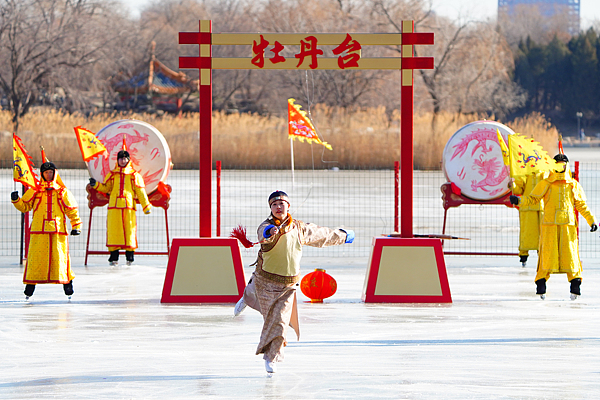

Bingxi
Ice sports flourished during the Qing Dynasty, particularly under the reign of Emperor Qianlong (1735–1796). From 1742 until the emperor's death in 1799, ice sports events were held nearly every year. Initially a military parade on ice, bingxi evolved into a public spectacle featuring soldiers showcasing their ice-skating skills. Over 1,600 soldiers participated annually, wielding traditional weapons like broadswords and cudgels.
Bingxi events included modern elements like speed and figure skating, as well as ice soccer, archery, acrobatics, martial arts and ice wrestling.
A bingxi painting in the collection of the Palace Museum in Beijing vividly depicts ice sports. Skaters, each with their unique poses and techniques, form a giant dragon as they glide in a serpentine formation, creating a spectacular display.